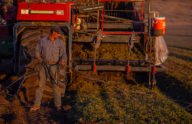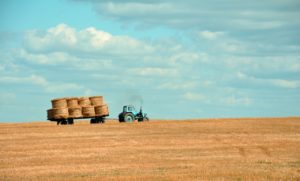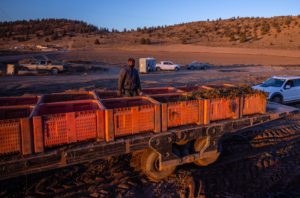National Review: A SCOTUS case that could shape property rights for years to come

California growers Cedar Point Nursery and Fowler Packing Company pride themselves on treating their employees with dignity and respect. Neither company’s employees wanted to unionize. Perhaps that is why the United Farm Workers invoked a California Agricultural Labor Relations Board (ALRB) regulation that grants union organizers the right to access the property of agricultural employers for three hours per day for 120 days per year for the purpose of encouraging employees to unionize.
At Cedar Point, the union organized a protest at 5 a.m. during the peak of harvest season, invading the property with bullhorns and disrupting work. Because the union organizers were there under authority of the ALRB, the employer could do little to stop them — other than filing a lawsuit. That case reached the Supreme Court of the United States, where argument is being heard today.
The growers’ theory of the case is quite simple. The Fifth Amendment’s Takings Clause prohibits California from taking property without just compensation. Long ago, the Supreme Court confirmed that the clause not only applies to traditional takings through the eminent-domain power, but also instances where the government physically invades private property in such a way as to effectively take an interest in the land for itself.
Early on, these cases involved situations like government-induced periodic flooding and overflights by low-flying military planes, where the Court recognized that the government had asserted an easement and must pay for it. It later applied the same logic where the government asserted the right to take an easement for the benefit of the public without paying for it. As the Court held in Kaiser Aetna, Inc. v. United States, “even if the government physically invades only an easement in property, it must nonetheless pay just compensation.”
The ALRB’s access regulation gives union organizers the right to invade growers’ private property for three hours per day, 120 days per year to solicit support for the union. As Ninth Circuit judge Sandra Ikuta explained in her dissent in that court, “the right to enter onto the land of another to take some action is the epitome of an easement.” Since the appropriation of an easement is a physical taking, the growers say, that means compensation is categorically required, even if the economic impact is minimal. Since California did not provide for compensation here, the regulation is invalid.
California argues that the access granted by the regulation is too minimal to qualify as a taking automatically, and that it must instead be assessed under the Supreme Court’s multifactor test from Penn Central Transportation Co. v. City of New York, which considers the economic impact of the regulation and the property owner’s “investment-backed expectations.” The problem with this is it fails to recognize the difference between regulations which permit the physical invasion of private property, such as an easement, and those that regulate how a property owner can use the property. The former are always takings without respect to other factors. That is true even when the easement — like most easements — contains time, place, and manner restrictions on access.
Ultimately, the Court must determine whether an easement is an easement, no matter how small. A ruling in favor of California would open the door to significant impingements on property rights, potentially allowing governments to decree public access to desirable private property limited to certain times to avoid takings liability. On the other hand, a ruling in favor of the growers would protect a fundamental element of the property right — the right to exclude trespassers from private property — and lay down a clear, workable rule governing the taking of access easements. The Court’s resolution of this question will shape the nature of property rights for years to come.
This op-ed was originally published by National Review on March 22, 2021.












